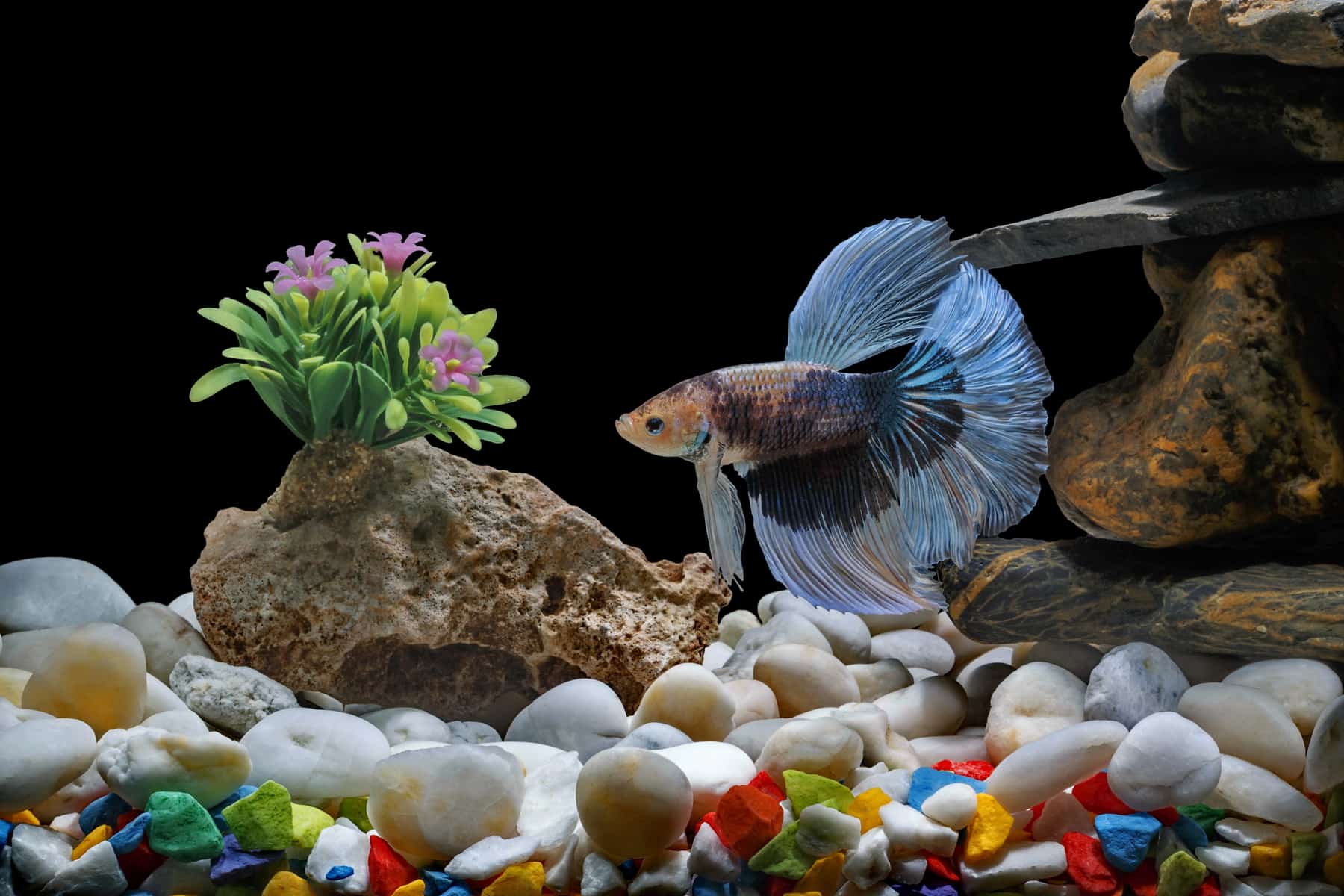Betta Hiding Spots
If you are a betta fish owner, you may have experienced the frustration of not being able to find your fish. No matter how hard you look, they seem to have disappeared. Betta hiding spots are a real concern among betta owners, but they can also be a source of joy. Watching your betta explore their hiding spots can be a fascinating and entertaining experience.
Pain Points Related to Betta Hiding Spots
As a betta parent, it can be easy to get worried when your fish suddenly disappears. You may worry that your fish is sick, injured, or dead. Suddenly, you may find yourself anxiously searching every inch of your tank, hoping to catch a glimpse of your betta. This anxiety could lead to stress and affect your own health.
The Target of Betta Hiding Spots
Betta hiding spots are not just a solution to anxious pet owners. They are a necessity for betta fish. Bettas are omnivores, and in nature, they live in shallow waters with plenty of vegetation. In captivity, bettas need hiding spots for a variety of reasons. Hiding spots help bettas feel secure, protect them from bright lights, promote natural behaviors, and even aid in their digestion.
Summary of Main Points on Betta Hiding Spots
Betta hiding spots are important for both betta owners and bettas alike. They provide security and promote natural behaviors. Hiding spots are necessary for digestion as well as protecting bettas from bright lights. Bettas enjoy exploring their surroundings and will make the most out of their hiding spots.
The First Betta Hiding Spot- Live Plants
One of the most common hiding spots for bettas is live plants. Live plants can serve as a source of food, air, and provide hiding places for your betta. Additionally, live plants will help to keep the water oxygenated, filter out toxins, and improve the overall quality of the water. Live plants will provide a natural-looking environment for your betta, and your pet will enjoy exploring the plant life.

The Second Betta Hiding Spot- Caves and Decorations
Caves and decorations are a great option for betta hiding spots. They provide a sense of security for your betta, and they come in a variety of designs, from simple to complex. Some of the best options for decorations are those with multiple entrances and exits, as they allow your betta to move around freely and explore their territory.

Betta Hiding Spot- The Significance of Lighting
Bettas enjoy filtered, indirect light. Harsh lights can cause stress and lead to health problems like ich. To create the ideal environment for your betta, you should avoid placing your tank near windows that receive direct sunlight. It is essential to use the right lighting for your tank, as bright lights can cause algae growth, leading to stress for your betta.

The Importance of Providing Variety in Betta Hiding Spots
Providing variety in your betta's hiding spots can help to prevent boredom, encourage exploration, and keep your betta engaged and active. Bettas love to explore their surroundings and need new things to stimulate their minds. By creating hiding spots using different materials, you can create a natural environment that mimics your betta's natural habitat.

Questions and Answers
Q: Why do betta fish like hiding?
A: Betta fish like hiding because it can provide a sense of security and can help reduce stress.
Q: What materials are best for betta hiding spots?
A: Betta fish enjoy hiding spots made from natural materials like plants, rocks, and driftwood.
Q: How many hiding spots should I provide for my betta?
A: Bettas are active and love to explore. It's best to provide several hiding spots to create a varied and stimulating environment.
Q: How frequently should I change betta hiding spots in my tank?
A: It's best to change your betta's hiding spots every few months. This will keep your betta engaged and create a healthy aquarium environment.
Betta Hiding Spots Conclusion
Providing betta hiding spots can be a source of joy for both betta owners and their pets. Hiding spots promote natural behaviors, encourage exploration, and protect bettas from bright lights. With the right hiding spots, you can create a healthy and engaging environment for your pet. So the next time you can't find your betta, remember to check their hiding spots. They may be right under your nose, enjoying their secure and natural environment.
Gallery
Betta Fish Hiding: Factors In Timid Behavior And Changes - Betta Source

Photo Credit by: bing.com / fish betta hiding tank community breeding sitemap terminology contact reviews
My Betta's Secert Hiding Spot - YouTube

Photo Credit by: bing.com / hiding betta
Betta Fish Hiding (What It Means & What To Do) - Betta Care Fish Guide

Photo Credit by: bing.com / betta aquarium substrate
Betta Fish Hiding From Me - BETTAKUS

Photo Credit by: bing.com / betta bettafish
Does My New Betta Have Ich? : Bettafish

Photo Credit by: bing.com / betta